
This is a template used to create a lesson surrounding an NGSS PE (5-PS1-1)
- Subject:
- Physical Science
- Material Type:
- Lesson
- Date Added:
- 06/20/2018

This is a template used to create a lesson surrounding an NGSS PE (5-PS1-1)
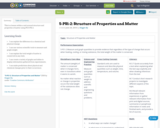
This is a lesson within a unit around structure and properties of matter using PE 5-PS1-2.
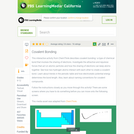
This interactive activity from ChemThink takes a closer look at a covalent bond--how it is formed and how the sharing of two electrons can keep atoms together.

In this electrochemistry activity, learners will explore two examples of electroplating. In Part 1, zinc from a galvanized nail (an iron nail which has been coated with zinc by dipping it in molten zinc) will be plated onto a copper penny. In Part 2, copper from a penny will be plated onto a nickel.

In this activity, learners conduct a simple experiment to see how electrically charged things like plastic attract electrically neutral things like water. The plastic will attract the surface of the water into a visible bump.

In this classic hands-on activity, learners estimate the length of a molecule by floating a fatty acid (oleic acid) on water. This lab asks learners to record measurements and make calculations related to volume, diameter, area, and height. Learners also convert meters into nanometers. Includes teacher and student worksheets but lacks in depth procedure information. The author suggests educators search the web for more complete lab instructions.

In this activity, learners investigate the speed of chemical reactions with light sticks. Learners discover that reactions can be sped up or slowed down due to temperature changes.
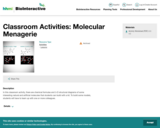
Small molecules are chemicals that can interact with proteins to affect their functions. Learn about the structure and biological functions of various small molecules like sugar and caffeine. Also featured on the HHMI DVD, Scanning Life's Matrix: Genes, Proteins, and Small Molecules. Available free from HHMI.

In this two-part activity, learners use everyday materials to visualize one mole of gas or 22.4 liters of gas. The first activity involves sublimating dry ice in large garbage bag. The second activity uses plastic bottles.

In this activity, learners build bridges using paper and explore how much weight each bridge design can support. There is an element of surprise, which increases learners' interest in the physics, when they discover just how strong they can make this seemingly flimsy material. This lesson guide includes background information, discussion questions, demonstration ideas and extensions.

In this activity, learners explore the question "What is paper?" Learners discover the processes and materials required to make paper while experimenting with different recycled fibers and tools.

In this activity, learners work in groups to determine the mass and volume of four samples: glass marbles, steel washers or nuts, pieces of pine wood, and pieces of PVC pipe. Learners then plot the data points on a large class graph of mass vs. volume to discover that data points for a particular material form a straight line, the slope of which gives the density of the material.
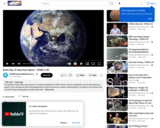
In this webcast we look at the beginnings of Earth Day and how a better understanding of our place in the universe has evolved through photographic scientific discoveries

This fast-paced webcast will look at how hot air balloons float and how a change in air pressure affects them.
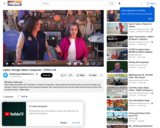
Explore composites in this fast-paced webcast to learn what they are, how they are made and how they are used in the aerospace industry